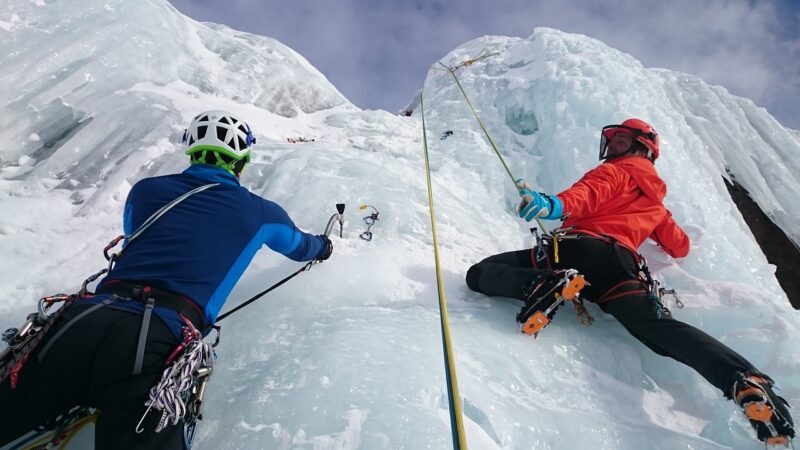What Drives Us to Take Risks? The Science of Thrill-Seeking
November 10, 2024

Risk-taking, often viewed as a reckless pursuit, is actually a nuanced behavior deeply embedded in our psyches. From the thrill of extreme sports to the uncertainty of starting a new business, the motivations behind risk-taking are both fascinating and complex. In this article, we will explore the psychological, physiological, and sociocultural elements that drive us to seek thrills and embrace risk.
1. Understanding the Psychology of Risk-Taking
The psychology of risk-taking is multifaceted. But at its core, it can be traced back to the human instinct for survival and evolution. Early humans who took risks—like venturing out for food in unsafe territories—could potentially gather more resources and, thus, thrive.
Psychologists categorize risk-takers into different personality types. Here are the main categories:
- Thrill-Seeking: People in this category actively seek out high-adrenaline experiences, from rock climbing to bungee jumping.
- Experiential Risk-Takers: This group prioritizes personal growth and new experiences over adrenaline rushes. They may travel extensively or explore new hobbies.
- Financial Risk-Takers: These individuals are more inclined towards investment and entrepreneurial ventures that could lead to high rewards but also significant losses.
Beyond personality, the social environment plays a pivotal role. Peer influences, societal expectations, and cultural norms can either constrain or encourage risk-taking behaviors.
2. The Role of Neuroscience in Risk-Taking
Neuroscience sheds light on the biological drives behind risk-taking. The brain’s reward system, particularly the release of dopamine, is activated during thrilling activities. Dopamine not only regulates feelings of pleasure and satisfaction, but it also reinforces our behaviors, urging us to repeat them for the reward.
Research reveals that individuals with a heightened sensitivity to dopamine may be more inclined to engage in thrill-seeking activities. Furthermore, the amygdala, the brain’s fear center, moderates our responses to perceived dangers. Those who experience lower levels of anxiety may find it easier to take risks than those who are more neurotic.
Key Insights from Neuroscience:
- The optimal balance of risk and reward can trigger a psychological state known as “flow,” where individuals feel fully immersed and energized.
- Adventure seekers train their brain to react differently to fear, often interpreting risky situations as challenges rather than threats.
3. Social and Cultural Influences on Risk-Taking
Cultural context profoundly influences the ways individuals view and engage in risk. In some cultures, risk-taking is celebrated and seen as a trait of courageous leaders, while in others, it may be viewed as irresponsible or reckless behavior.
- Adventure Tourism: The rise of adventure tourism has made extreme sports more accessible, attracting people from various backgrounds to try activities like paragliding, scuba diving, and skydiving, as a way to seek thrills.
- Social Media: Platforms enable risk-takers to share their experiences, fostering online communities that encourage and glamorize risk-taking behaviors. The rise of social media influencers who undertake extreme challenges exemplifies this phenomenon.
Understanding these influences is critical for comprehending why some individuals become thrill-seekers while others do not. The intersection of individual personality characteristics with cultural narratives dramatically influences risk-taking behaviors.
4. The Benefits and Drawbacks of Risk-Taking
While risk-taking can lead to exciting experiences and personal growth, it is not without its drawbacks. Here, we explore both sides:
Benefits of Risk-Taking:
- Personal Growth: Engaging with uncertainty and challenge can lead to enhanced self-esteem and resilience.
- Innovation: Many breakthroughs in art, science, and technology arise from taking risks that others avoid.
- Thrill-Seeking Enjoyment: For many, the excitement of participating in high-risk activities is a significant source of happiness.
Drawbacks of Risk-Taking:
- Potential for Harm: Not all risks yield positive outcomes; some can lead to physical injury or financial loss.
- Regret and Second-Guessing: When outcomes are negative, individuals often struggle with the consequences.
Ultimately, understanding the balance between excitement and responsibility is key for those who are drawn to risk-taking.
5. Risk-Taking Across Different Activities
Risk-taking manifests in various contexts, from personal life decisions to extreme sports. Here are a few common areas where risk-taking is prevalent:
- Extreme Sports: Activities like skydiving, rock climbing, and surfing attract thrill-seekers who crave the adrenaline rush associated with conquering physical challenges.
- Career Decisions: Leaving a stable job to start a business or pursue a passion project entails risks that can lead to rewarding outcomes if approached strategically.
- Travel Adventures: Many people embark on treks through remote destinations, choosing to face the unknown in search of authentic experiences.
These examples illustrate that risk-taking isn’t limited to single moments of thrill; instead, it can be woven into the fabric of life choices.
Conclusion
The allure of risk-taking is woven into the human experience, fueled by psychological instincts, neurochemical reactions, and cultural narratives. While it can lead to thrilling experiences and personal growth, it requires mindfulness to navigate the balance between thrill-seeking and responsible living. Ultimately, understanding the motivations behind risk can provide insight not only into individual behavior but also into broader sociocultural trends. Therefore, whether you consider yourself a daredevil or a cautious planner, embracing calculated risks can help you discover new horizons in life—after all, the greatest rewards often lie just beyond our comfort zones.
If you’re considering a leap into adventure, remember that the thrill of taking risks is an inherent part of being human. Equip yourself with knowledge, weigh your options, and dive into the experiences that await you!






